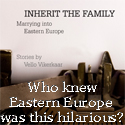TALLINN — A conflict of interest scandal involving the investment bank LHV has Estonian finance authorities pushing for more regulation of where pension funds can be invested.
Since the fall of 2006, LHV has invested 5 percent of its clients’ pension money to the troubled Finnish fast-loan company Luottotalo Fenno, in which LHV’s chairman of the board Rain Lõhmus is one of the shareholders.
Since the story broke in the Estonian business press this week, the Estonian Financial Supervision Authority and a board member of [private_supervisor]SEB Asset Management have decried the LHV investment as a conflict of interest that should be prohibited.
However Andres Viisemann, LHV fund manager considers the investment a good deal, arguing that there was no conflict of interest. In Viisemann’s words, Fenno’s loan portfolio consists of more than 16,000 short-term small loans and therefore is well-scattered. Also Fenno’s bonds offered high productivity compared to the risk of the investment.
Viisemann explained that the conflict of interest would have occurred if Lõhmus would have made the investment decision. However, Lõhmus did not do the investment decisions, was not part of making such decisions nor consulted the investment decisions, according to Viisemann.
“The decision to invest in Fenno’s bonds was my, as a fund manager’s decision,” Viisemann told Baltic Reports. “Rain does not have means to influence my investment decisions.”
“However, I was aware of the risk to be blamed in conflict of interest, therefore I considered those investments very thoroughly,” said Viisemann.
Also Estonian largest banks Swedbank and SEB are not strangers to Fenno’s bonds. Swedbank fell into a pension fund scandal in the fall 2009 when the bank invested the money of pension fund shareholders into the Private Debt Fund, who is one of the main investors of Luototalo Fenno. Back in fall 2009, Private Debt Fund’s value dropped by 21.19 percent, about 120 million krooni (€7.7 million). The bank then had to refund the losses out of its own funds. About 120 million krooni (€7.7 million) worth Fenno’s bonds were also in SEB’s second pillar funds at the end of 2009.
Conflict of interests exists
LHV’s critics are not convinced by Viisemann’s explanation, though. Sven Kunsing, a board member of SEB Asset Management, said there is a conflict of interest in this situation. However, he said LHV has done everything to keep the risk low.
“We keep an eye on it and we clearly let them know that we want to see that all bond investors are treated equally,” Kunsing told Baltic Reports.
Andre Nõmm, director of the business supervision division at the Estonian Financial Supervision Authority agrees that there is a conflict of interest. However, deciding where the investment banks should invest is their own free will if they can keep the conflict of interest low.
“The fund managers decide whether the investment is financially correct, the state cannot judge if a certain investment was right or not,” Nõmm told Baltic Reports.
Still, the Estonian Financial Supervision Authority has proposed that the Ministry of Finance to compose a bill which would prohibit pension fund investments to those stocks where fund managers or shareholders have directly or indirectly an important role. [/private_supervisor] [private_subscription 1 month]SEB Asset Management have decried the LHV investment as a conflict of interest that should be prohibited.
However Andres Viisemann, LHV fund manager considers the investment a good deal, arguing that there was no conflict of interest. In Viisemann’s words, Fenno’s loan portfolio consists of more than 16,000 short-term small loans and therefore is well-scattered. Also Fenno’s bonds offered high productivity compared to the risk of the investment.
Viisemann explained that the conflict of interest would have occurred if Lõhmus would have made the investment decision. However, Lõhmus did not do the investment decisions, was not part of making such decisions nor consulted the investment decisions, according to Viisemann.
“The decision to invest in Fenno’s bonds was my, as a fund manager’s decision,” Viisemann told Baltic Reports. “Rain does not have means to influence my investment decisions.”
“However, I was aware of the risk to be blamed in conflict of interest, therefore I considered those investments very thoroughly,” said Viisemann.
Also Estonian largest banks Swedbank and SEB are not strangers to Fenno’s bonds. Swedbank fell into a pension fund scandal in the fall 2009 when the bank invested the money of pension fund shareholders into the Private Debt Fund, who is one of the main investors of Luototalo Fenno. Back in fall 2009, Private Debt Fund’s value dropped by 21.19 percent, about 120 million krooni (€7.7 million). The bank then had to refund the losses out of its own funds. About 120 million krooni (€7.7 million) worth Fenno’s bonds were also in SEB’s second pillar funds at the end of 2009.
Conflict of interests exists
LHV’s critics are not convinced by Viisemann’s explanation, though. Sven Kunsing, a board member of SEB Asset Management, said there is a conflict of interest in this situation. However, he said LHV has done everything to keep the risk low.
“We keep an eye on it and we clearly let them know that we want to see that all bond investors are treated equally,” Kunsing told Baltic Reports.
Andre Nõmm, director of the business supervision division at the Estonian Financial Supervision Authority agrees that there is a conflict of interest. However, deciding where the investment banks should invest is their own free will if they can keep the conflict of interest low.
“The fund managers decide whether the investment is financially correct, the state cannot judge if a certain investment was right or not,” Nõmm told Baltic Reports.
Still, the Estonian Financial Supervision Authority has proposed that the Ministry of Finance to compose a bill which would prohibit pension fund investments to those stocks where fund managers or shareholders have directly or indirectly an important role. [/private_subscription 1 month] [private_subscription 4 months]SEB Asset Management have decried the LHV investment as a conflict of interest that should be prohibited.
However Andres Viisemann, LHV fund manager considers the investment a good deal, arguing that there was no conflict of interest. In Viisemann’s words, Fenno’s loan portfolio consists of more than 16,000 short-term small loans and therefore is well-scattered. Also Fenno’s bonds offered high productivity compared to the risk of the investment.
Viisemann explained that the conflict of interest would have occurred if Lõhmus would have made the investment decision. However, Lõhmus did not do the investment decisions, was not part of making such decisions nor consulted the investment decisions, according to Viisemann.
“The decision to invest in Fenno’s bonds was my, as a fund manager’s decision,” Viisemann told Baltic Reports. “Rain does not have means to influence my investment decisions.”
“However, I was aware of the risk to be blamed in conflict of interest, therefore I considered those investments very thoroughly,” said Viisemann.
Also Estonian largest banks Swedbank and SEB are not strangers to Fenno’s bonds. Swedbank fell into a pension fund scandal in the fall 2009 when the bank invested the money of pension fund shareholders into the Private Debt Fund, who is one of the main investors of Luototalo Fenno. Back in fall 2009, Private Debt Fund’s value dropped by 21.19 percent, about 120 million krooni (€7.7 million). The bank then had to refund the losses out of its own funds. About 120 million krooni (€7.7 million) worth Fenno’s bonds were also in SEB’s second pillar funds at the end of 2009.
Conflict of interests exists
LHV’s critics are not convinced by Viisemann’s explanation, though. Sven Kunsing, a board member of SEB Asset Management, said there is a conflict of interest in this situation. However, he said LHV has done everything to keep the risk low.
“We keep an eye on it and we clearly let them know that we want to see that all bond investors are treated equally,” Kunsing told Baltic Reports.
Andre Nõmm, director of the business supervision division at the Estonian Financial Supervision Authority agrees that there is a conflict of interest. However, deciding where the investment banks should invest is their own free will if they can keep the conflict of interest low.
“The fund managers decide whether the investment is financially correct, the state cannot judge if a certain investment was right or not,” Nõmm told Baltic Reports.
Still, the Estonian Financial Supervision Authority has proposed that the Ministry of Finance to compose a bill which would prohibit pension fund investments to those stocks where fund managers or shareholders have directly or indirectly an important role. [/private_subscription 4 months] [private_subscription 1 year]SEB Asset Management have decried the LHV investment as a conflict of interest that should be prohibited.
However Andres Viisemann, LHV fund manager considers the investment a good deal, arguing that there was no conflict of interest. In Viisemann’s words, Fenno’s loan portfolio consists of more than 16,000 short-term small loans and therefore is well-scattered. Also Fenno’s bonds offered high productivity compared to the risk of the investment.
Viisemann explained that the conflict of interest would have occurred if Lõhmus would have made the investment decision. However, Lõhmus did not do the investment decisions, was not part of making such decisions nor consulted the investment decisions, according to Viisemann.
“The decision to invest in Fenno’s bonds was my, as a fund manager’s decision,” Viisemann told Baltic Reports. “Rain does not have means to influence my investment decisions.”
“However, I was aware of the risk to be blamed in conflict of interest, therefore I considered those investments very thoroughly,” said Viisemann.
Also Estonian largest banks Swedbank and SEB are not strangers to Fenno’s bonds. Swedbank fell into a pension fund scandal in the fall 2009 when the bank invested the money of pension fund shareholders into the Private Debt Fund, who is one of the main investors of Luototalo Fenno. Back in fall 2009, Private Debt Fund’s value dropped by 21.19 percent, about 120 million krooni (€7.7 million). The bank then had to refund the losses out of its own funds. About 120 million krooni (€7.7 million) worth Fenno’s bonds were also in SEB’s second pillar funds at the end of 2009.
Conflict of interests exists
LHV’s critics are not convinced by Viisemann’s explanation, though. Sven Kunsing, a board member of SEB Asset Management, said there is a conflict of interest in this situation. However, he said LHV has done everything to keep the risk low.
“We keep an eye on it and we clearly let them know that we want to see that all bond investors are treated equally,” Kunsing told Baltic Reports.
Andre Nõmm, director of the business supervision division at the Estonian Financial Supervision Authority agrees that there is a conflict of interest. However, deciding where the investment banks should invest is their own free will if they can keep the conflict of interest low.
“The fund managers decide whether the investment is financially correct, the state cannot judge if a certain investment was right or not,” Nõmm told Baltic Reports.
Still, the Estonian Financial Supervision Authority has proposed that the Ministry of Finance to compose a bill which would prohibit pension fund investments to those stocks where fund managers or shareholders have directly or indirectly an important role. [/private_subscription 1 year]
— This is a paid article. To subscribe or extend your subscription, click here.












